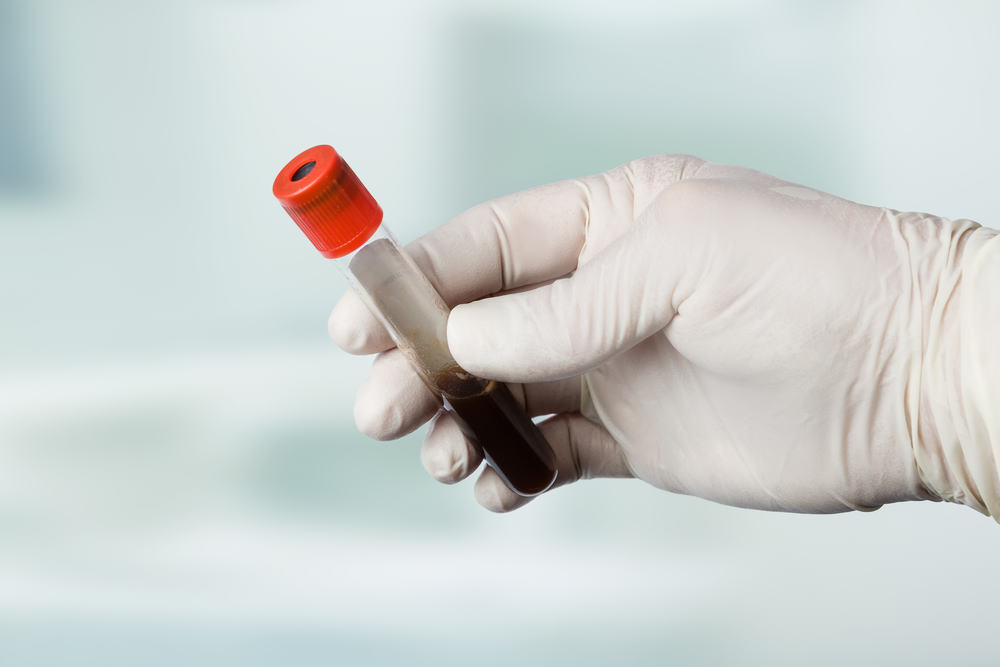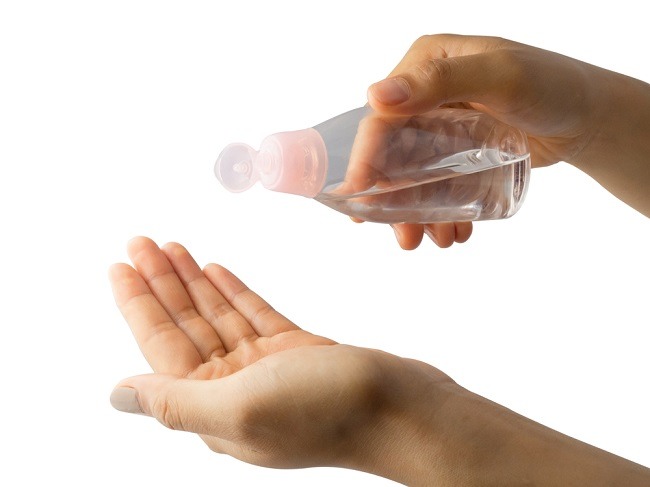Hyperbaric oxygen therapy is a method of treatment that is carried out by giving pure oxygen in a special room with high air pressure, for the patient to breathe. Hyperbaric oxygen therapy is performed in a special room that can increase air pressure to three times normal atmospheric pressure. The increase in air pressure in this hyperbaric chamber causes the patient's lungs to absorb more oxygen than usual, so that it can help cure various diseases.

The principle of hyperbaric oxygen therapy is to help the body to repair damaged tissue by increasing the flow of oxygen to the body's tissues. Hyperbaric oxygen therapy will cause the blood to absorb more oxygen due to the increased oxygen tension in the lungs manipulated by the hyperbaric chamber. With a higher than normal concentration of oxygen, the body will be triggered to repair damaged tissue faster than normal. The doctor will recommend the patient to undergo hyperbaric oxygen therapy for several times, depending on the indications.
Hyperbaric Oxygen Therapy Indications
Hyperbaric oxygen therapy may be recommended for patients with conditions or diseases such as:
- decompression sickness. Decompression sickness is a condition that occurs when blood flow in the body is blocked, due to changes in air pressure. This pressure change can occur due to flight, diving, or other things that result in drastic changes in air pressure. Sudden changes in air pressure outside the body can cause air bubbles to form in the blood vessels or emboli. Hyperbaric oxygen therapy can shrink the bubbles in the blood vessels due to changes in pressure.
- Carbon monoxide poisoning. Carbon monoxide poisoning can occur when a person inhales carbon monoxide gas which causes impaired absorption of oxygen by the blood. Hyperbaric oxygen therapy can treat this condition by removing carbon monoxide from the blood with high pressure pure oxygen.
- Healing wounds that are difficult to heal. Under normal conditions, the wound can heal by itself. However, under certain conditions, wounds are difficult to heal and close again, for example chronic wounds in diabetics or pressure ulcers. These conditions reduce the supply of oxygen to the tissues surrounding the wound, while the tissues that play a role in closing the wound often require a lot of oxygen. Hyperbaric oxygen therapy can help heal these wounds by providing oxygen with a higher concentration, so that oxygen needs in the wound tissue can be met.
- Skin graft restoration. Skin grafts in patients who do not have circulatory disorders can blend well. However, if the patient receiving the skin graft suffers from circulatory disorders such as in diabetes, the union of the skin graft with the patient's skin can be problematic. Hyperbaric oxygen therapy can help unify skin grafts in patients with circulatory disorders, by maintaining oxygen supply to the area receiving the skin graft, so that recovery can take place properly.
- Soft tissue infection with necrosis (tissue death). Soft tissue infections are generally caused by bacteria. Hyperbaric oxygen therapy can help heal soft tissue infections by accelerating the death of bacteria, especially anaerobic bacteria that live in low oxygen conditions, by providing an excess supply of oxygen to the infected tissue. Excess oxygen in the blood can also help tissue to regenerate and accelerate wound healing.
In addition to the above conditions, hyperbaric oxygen therapy is also used in conditions of crush injury and compartment syndrome, air embolism, radiation-induced organ injury, recurrent osteomyelitis, burns, anemia, occlusion of blood vessels in the eye, and sudden deafness. Discuss with your doctor the benefits of using hyperbaric oxygen therapy for your condition, as well as the risks that may arise.
Hyperbaric Oxygen Therapy Warning
Not all patients can undergo hyperbaric oxygen therapy. Some conditions can cause a person to not be able to undergo oxygen therapy at all because it is feared that it will cause dangerous complications. A condition that causes a person to be completely unable to undergo hyperbaric oxygen therapy is a pneumothorax. Patients who are taking certain medications, such as cisplatin, bleomycin, disulfiram, and doxorubicin, also cannot undergo hyperbaric oxygen therapy.
In addition, there are several conditions that cause patients who want to undergo hyperbaric oxygen therapy to receive special treatment or supervision, including:
- Phobia of closed spaces (claustrophbia).
- Asthma.
- Fever.
- Chronic obstructive pulmonary disease (COPD).
- Red blood cell disorders.
- Disorders of the Eustachian tube, which is the tube that connects the ear to the nose.
- Upper respiratory tract infection.
- seizures.
The effect of hyperbaric oxygen therapy on pregnancy is not yet known, but it is allowed to be used in emergency situations, such as carbon monoxide poisoning.
Hyperbaric Oxygen Therapy Preparation
Prior to undergoing hyperbaric oxygen therapy, the patient will first be asked to stop using cosmetics or personal care products with flammable ingredients. These products generally use hydrocarbons as the main composition, which is at risk of burning due to reacting with oxygen. In addition, to avoid the risk of fire, officers will ask patients not to bring objects that can trigger a fire, such as lighters or batteries.
Hyperbaric Oxygen Therapy Procedure
Hyperbaric oxygen therapy is performed in a hyperbaric tube or chamber. There are two types of hyperbaric chambers: monoplace hyperbaric chamber and multiple hyperbaric chamber. Monoplace hyperbaric chamber can only accommodate one person at a time for therapy, while multiple hyperbaric chamber can accommodate more than one person. A number of multiple hyperbaric chamber can even accommodate up to 20 people. The use and maintenance of hyperbaric chambers must be strictly adhered to.
Hyperbaric oxygen therapy is performed without the need for hospitalization. The patient will first be asked to change into hospital-specific clothing. After that, the patient or several patients will enter the hyperbaric chamber. The patient will then be positioned as comfortably as possible during therapy, generally in a relaxed sitting position.
After making sure that there are no flammable objects or materials in the hyperbaric chamber, the officer will leave the patient in the hyperbaric room and begin to slowly increase the air pressure of the hyperbaric chamber until it reaches the required pressure. During the procedure of hyperbaric therapy, the patient will feel pressure on the eardrum due to the increase in air pressure in the hyperbaric chamber. To relieve pressure on the eardrum, the patient can yawn or swallow, which can help equalize the air pressure inside the ear.
Therapy generally lasts for two hours, during which time the officer will monitor the patient's condition through a special monitoring device. When finished, the officer will lower the hyperbaric chamber pressure to normal again. After that, the patient will be asked to rest before continuing his activities as usual. The patient will undergo this hyperbaric oxygen therapy for several times according to the doctor's advice.
After Hyperbaric Oxygen Therapy
Patients may feel tired and lethargic or hungry, aged undergoing hyperbaric oxygen therapy sessions. After resting for a while, this feeling of tiredness will disappear by itself and the patient can resume his activities again.
Keep in mind that most conditions that can be treated with hyperbaric oxygen therapy require several treatments to get the best results. The number of repetitions of this therapy is different for each condition or disease. Carbon monoxide poisoning requires only 3 treatments, while other conditions or diseases may require more treatments, some up to 40 treatments.
Hyperbaric oxygen therapy will be combined with other treatment methods to obtain maximum results. The doctor will plan a combination of hyperbaric oxygen therapy with drugs or other methods, so that the patient's recovery can be achieved optimally.
Risks of Hyperbaric Oxygen Therapy.
Hyperbaric oxygen therapy is a fairly safe method and very rarely causes side effects or complications. But that does not mean hyperbaric oxygen therapy can not cause certain side effects. Some of the side effects that can occur due to hyperbaric oxygen therapy, although very rare, are:
- Feeling discomfort or pain during hyperbaric oxygen therapy procedures.
- Transient nearsightedness following hyperbaric oxygen therapy.
- Seizures due to a buildup of oxygen in the brain.
- Injury to the ear.
- Injury to the lungs.
- Fire or explosion in a hyperbaric chamber, especially if the patient uses or carries flammable materials or products.









